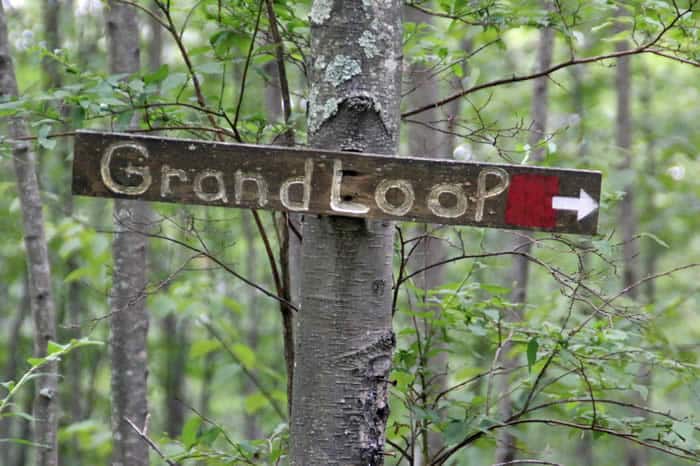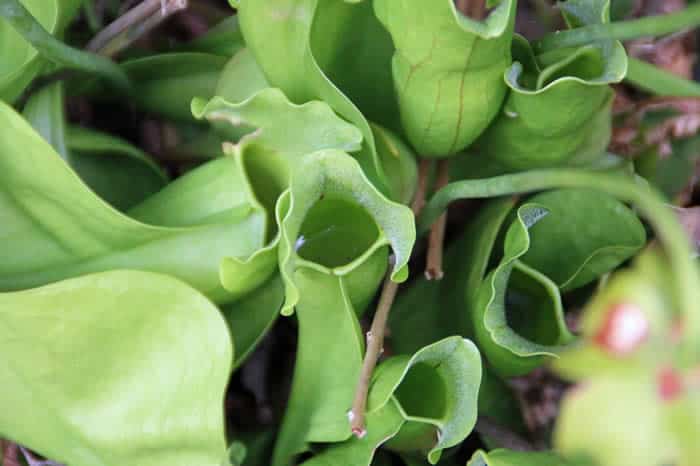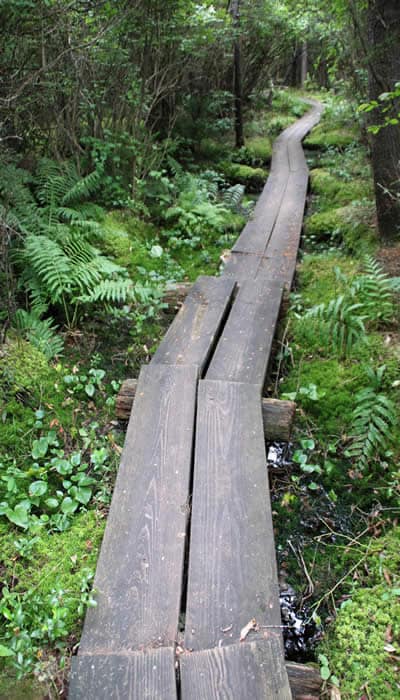
Long Swamp

IF YOU GO
Where: Go to Camp Speers YMCA on Nichecronk Road, off Route 739 North, 5.4 miles past the Route 209 light in Dingmans Ferry, Pa. Long Swamp is open for public hiking, but you must check in and check out at the Camp Speers office and wear a wristband.
GPS coordinates: 41-16.845N, 74-56.161W
Trail information: Easy-to-moderate footing, mostly on narrow, single-track trails. Rocky in places and wet off the boardwalk (where you may not stray). This easy 3.5-mile trail can be hiked in two hours.
KNOW BEFORE YOU GO:
- A trail map is available at the camp office, and on this webpage (click on button above).
- bitats. Stay on marked trails. Parts are rocky or wet. Wear sturdy boots or shoes.
- No dogs.
- No motorized vehicles, including ATVs.
- For information on conserving land, which protects water: delawarehighlands.org.
- For information on Camp Speers: campspeersymca.org.

Closeup of arum, which delights in the cool, shady spots at Long Swamp.

Pitcher plants are well equipped for storing water at Long Swamp.
Journey into a relic of the Ice Age
By Carol Hillestad
Formed 10,000 years ago after the area’s most recent glacier retreated, the prehistoric time capsule called Long Swamp sits smack in the middle of YMCA’s Camp Speers, near Dingmans Ferry in Pike County.
Thanks to the landowner (YMCA), Delaware Highlands Conservancy, and public funding, the 458 acres are protected for future generations – and open to the public for hiking.
A boardwalk leads hikers deeper
into Long Swamp.
Jamie Bartholomew, who monitors conserved lands for Delaware Highlands, arranged to meet at the camp office on an overcast August morning. We signed in, got a map of the public trails, and were given a wristband to identify us as registered visitors. George Painter, director of Camp Speers, greeted us and confirmed that the camp welcomes visitors to Long Swamp.
Melting ice formed a pond or small lake here as the Wisconsin glacier retreated, Jamie said. Over time, the bog was succeeded by swamp – forested wetland that is less acidic than a bog. We took a wide, grassy path that soon turned into a single-file trail through low-bush blueberries and then to a simple plank boardwalk, built inches over the swamp.
It was cool, dark, damp and otherworldly. Interrupted ferns – 180-million-year-old contemporaries of the dinosaurs – reached as high as our shoulders. Black spruce and other wetland trees and shrubs grew in profusion. The moist floor of the swampy forest was carpeted with acres of brilliant green sphagnum moss, providing natural erosion and flood control (it can hold up to 26 times its dry weight in water), as well as purifying and recharging the groundwater that our creeks and drinking water depend on.
Clusters of carnivorous pitcher plants were in bloom right at the edge of the boardwalk. We saw red squirrels, garter snakes, frogs and other amphibians, dragonflies, deer and other critters. Bears – common swamp-dwellers – were not in evidence that day.
As we hiked up from the swamp to curve around it and re-enter at the southern end, Jamie gave a quick tutorial about sphagnum moss – sphagnum is the live form of the plant; peat moss is the dead form; both are the early stages of coal. Most coal was formed 300 million years ago, when much of Earth was covered by steamy swamps.
All this beauty and mystery are ours to enjoy – thanks to the landowner, who was determined to protect and conserve this unique place, and to the hard work of the Delaware Conservancy land trust. Why not get outdoors and enjoy it?
Comments from other hikers:
Be the first to add your comment for this hike.
